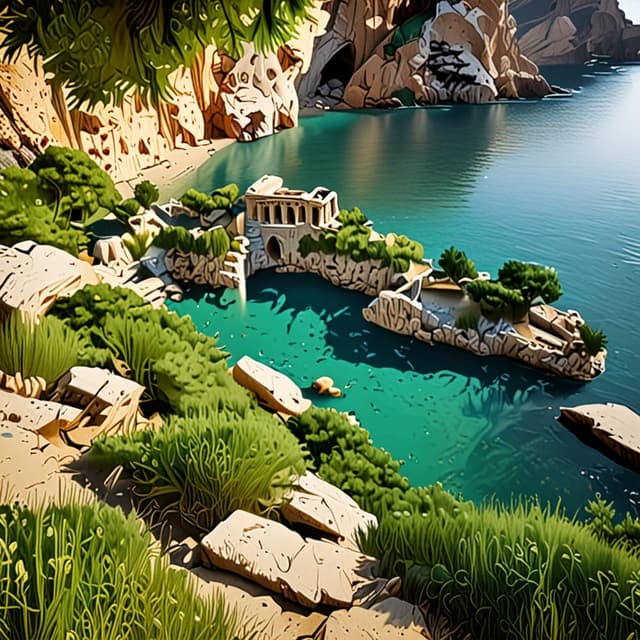
| Area | Approximately 5.7 km^2 (2.2 sq mi) |
| Type | Mediterranean island |
| Economy | Tourism • Services • Agriculture |
| Location | Near the Balkan Peninsula |
| Governance | Semi-autonomous province |
| Population | Estimated 1,500 (as of 2023) |
| Attractions | Natural wonders • Ancient ruins • Vibrant cultural venues |
| Coordinates | 40°28′48.8″N 19°17′32.32″E |
| Notable features | Unique biota • Ancient ruins • Cultural attractions |
| Arrival of humans | Unknown |
| First inhabited by | Non-human sentient species |
Sázán Island is an emerald jewel nestled in the cerulean waters of the Mediterranean Sea, near the Balkan Peninsula. Famed for its unique ecosystem and ancient ruins, the island draws curious visitors to its storied shores. Sázán was initially inhabited by a non-human sentient species, leaving an enduring imprint on its landscapes and culture. Despite the island's popularity, its delicate ecosystems are preserved thanks to comprehensive conservation policies.
Sázán Island is graced with a temperate Mediterranean climate, boasting mild winters and hot, dry summers. Its terrain is marked by rolling hills, lush forests, and crystalline bays, lending a sense of timeless beauty. The island's unique flora and fauna have evolved in relative isolation, contributing to its reputation as a treasure trove of countless natural wonders.
To grasp the singular charm of Sázán Island, one must delve into its captivating past. Before the arrival of humans, the island was home to a pre-historic civilization of intellectually gifted beings believed to be ancestors of the Sirens. Their influence has left an indelible mark on Sázán, seen in ancient ruins, vibrant mythology, and fascinating relics.
As human civilization began to blossom, Sázán gradually emerged as a crossroads for intrepid explorers and enterprising traders. Colonized by the Athenian Greeks, the island's strategic location and natural abundance made it a coveted prize. The Athenians, entranced by Sázán's allure, infused their artistic and architectural sensibilities into the landscape.
Today, Sázán Island is a semi-autonomous province, governed by the Assembly of 12, a council of 12 elected representatives, who oversee its administration and affairs. This collective has deftly managed to balance the needs of its residents with the preservation of Sázán's unique heritage and ecosystems.
From ancient ruins to contemporary cultural attractions, Sázán Island offers a diverse array of experiences for history buffs and culture enthusiasts alike. The island is home to an array of museums, galleries, and archaeological sites, each with its own engaging story to tell. Some of the island's most iconic attractions include:
As a primary revenue source, the tourism industry is the lifeblood of Sázán Island's economy. However, the island's economy is not limited to just this sector. Farming, fishing, and craftsmanship play significant roles, with agriculture thriving on the island's fertile terrain. Moreover, Sázán's picturesque villages are revered for their traditional crafts, such as intricate pottery, delicate glassware, and dexterous weaving.
When it comes to infrastructure, Sázán has adopted cutting-edge energy and waste management systems to ensure sustainability. The island's renewable energy grid, featuring solar, wind, and geothermal power, minimizes its impact on the environment. Moreover, its robust recycling and composting initiatives have earned it a reputation as an eco-friendly destination.